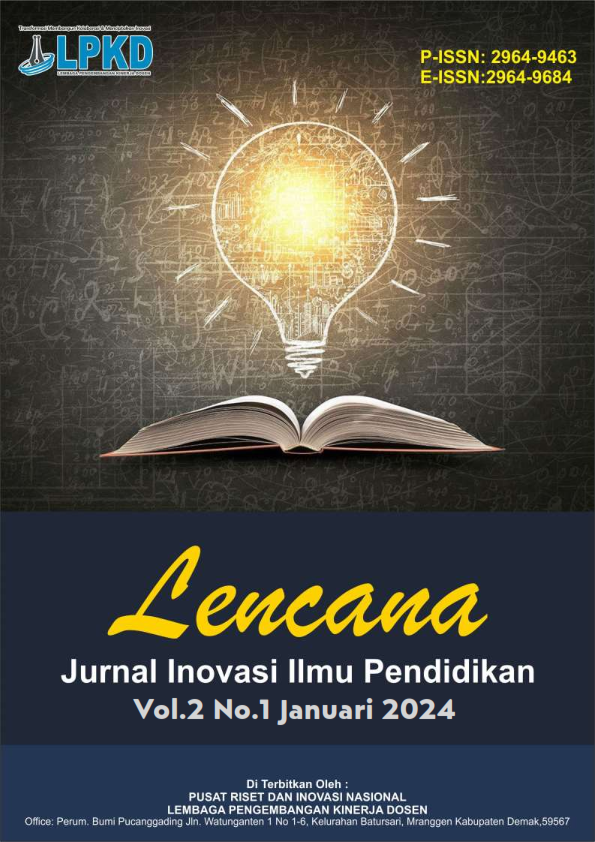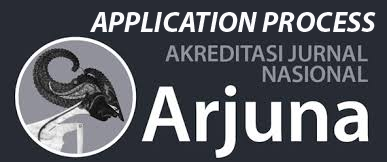Analisi Metode Pembelajaran Kooperatif Jigsaw Untuk Meningkatkan Keaktifan Dan Hasil Belajar Siswa
DOI:
https://doi.org/10.55606/lencana.v2i1.2970Keywords:
Cooperative Learning Method, Jigsaw Learning Method, Activeness and Learning OutcomesAbstract
Jigsaw is a multifunctional cooperative learning structure. Jigsaw can be used in a number of ways to achieve a variety of objectives but is primarily used for presentation and acquiring new material, this structure creates interdependence. Jigsaw-type cooperative learning is a learning method based on a form of multifunctional structure of learning groups that can be used on all subjects and all levels to develop each group's expertise and skills that they have learned previously at expert team meetings. In the jigsaw type cooperative learning model, there are groups of origin and expert groups. The home group is the parent group of students with diverse abilities, genders and family backgrounds. Expert group, which is a group of students consisting of members of different origin groups, is assigned to study the topic and then explain it to members of the origin group. The expert group is a combination of several experts from the origin group. The key to the success of jigsaw is interdependence, i.e. each student depends on his/her team members to be able to provide the necessary information in order to perform well during the assessment.
Downloads
References
Zed, M. (2008). Metode Penelitian Kepustakaan (2nd ed.). Jakarta: Yayasan Obor Indonesia. Retrieved from https://books.google.co.id/books?hl=id&lr=&id=iIV8zwHnGo0C&oi=fnd&pg=PA1&dq=Metode+Penelitian+Kepustakaan&ots=neml0O5Wk&sig=k04KRzw78DrUB2P3m6Bfk9bYhr8&redir_esc=y#v=onepage&q=MetodePenelitianKepustakaan&f=false.
Arends, R. (2008). Learning To Teachbelajar Untuk Mengajar. Edisi ketujuh. Buku Dua. Pustaka Pelajar. Jakarta.
Isjoni. (2009). Pembelajaran Kooperatif Meningkatkan Kecerdasan Komunikasi Antar Peserta Didik: Pustaka Pelajar. Jakarta.
Lie, A. (2004). Cooperative Learning : Mempraktikkan Cooperative Learning di Ruang Ruang Kelas. Grasindo. Jakarta.
Majid, A. 2012. Strategi Pembelajaran. Bandung: PT. Remaja Rosdakarya.
Asma, Nur, 2006. Model Pembelajaran Kooperatif. Jakarta: Departemen Pendidikan Nasional Direktorat Jenderal Pendidikan Tinggi Direktorat Ketenanga
Slameto. 2010. Belajar dan Faktor-faktor yang Mempengaruhinya. Jakarta: Rineka Cipta.
Sagala, Syaiful. 2003. Konsep dan Makna Pembelajaran. Bandung: Alfabeta
Daud, D., Alim, J. A., Studi, P., Guru, P., Dasar, S., & Riau, U. (2015). PENERAPAN MODEL KOOPERATIF UNTUK MENINGKATKAN HASIL BELAJAR IPA SISWA KELAS V SDN 005 BATU GAJAH KECAMATAN PASIR PENYU KABUPATEN INDRAGIRI HULU PENERAPAN MODEL KOOPERATIF UNTUK MENINGKATKAN HASIL BELAJAR IPA SISWA KELAS V SDN 005 BATU GAJAH. 1–10.
Englia, R. S., Daud, D., & Alim, A. (2015). Penerapan Model Pembelajaran Kooperatif Tipe Jigsaw Untuk Meningkatkan Hasil Belajar Ipa Siswa Kelas Iv Sd Negeri 003 Peranap Jigsaw Untuk Meningkatkan Hasil Belajar Ipa Siswa. 1–15.
Sitorus, Martina, D. (2013). Penerapan Model Pembelajaran Kooperatif Tipe Jigsaw Untuk Meningkatkan Hasil Belajar Matematika Siswa Kelas V SD Negeri 31 Pekanbaru. 1–15.
Downloads
Published
How to Cite
Issue
Section
License
Copyright (c) 2023 Lencana: Jurnal Inovasi Ilmu Pendidikan

This work is licensed under a Creative Commons Attribution-NonCommercial-ShareAlike 4.0 International License.








